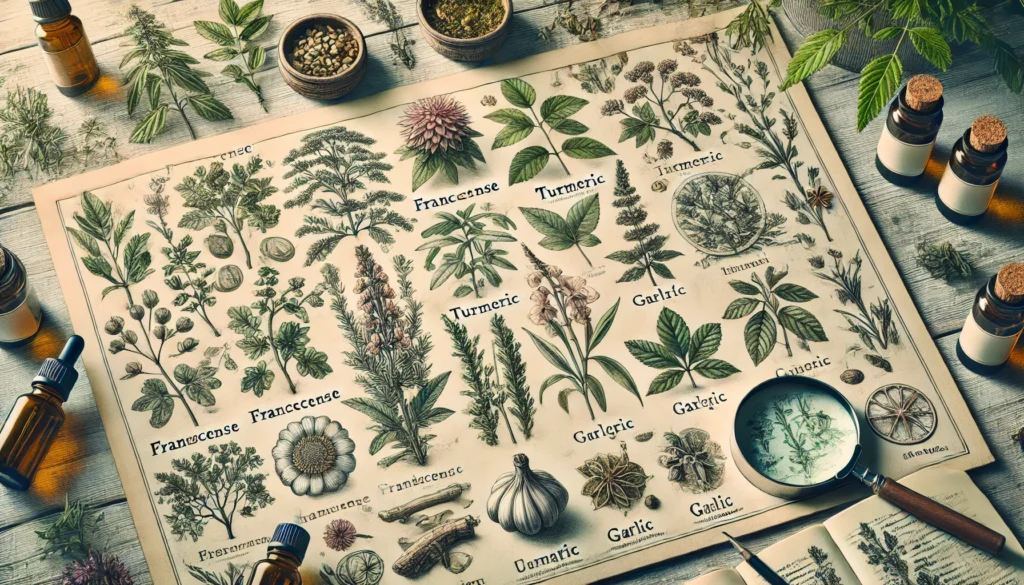Table of Contents
Tea Tree Oil: A Natural Remedy for Skin, Hair, and Overall Wellness
Tea tree oil is a versatile essential oil with a long history of use for its powerful antiseptic, anti-inflammatory, and antimicrobial properties. Derived from the leaves of the Melaleuca alternifolia tree native to Australia, tea tree oil has become a staple in natural health and skincare routines around the world. From treating acne and fungal infections to cleaning wounds and even household cleaning, tea tree oil’s uses are vast. In this blog, we’ll explore the history, benefits, and safe ways to use tea tree oil as a natural remedy for everyday needs.
This site contains affiliate links, and I may receive a commission on purchases made through them. Please see our Affiliate Disclosure for more details.

Historical Significance
Origins in Australia
Tea tree oil has been used for centuries by the Indigenous Bundjalung people of Australia, who discovered the healing properties of the Melaleuca alternifolia tree. They would crush the leaves and apply them to cuts, burns, and skin infections. They also brewed tea from the leaves to treat coughs and colds, which is how the plant earned its name, “tea tree.” The medicinal uses of tea tree leaves were passed down through generations as a natural remedy for various skin and respiratory ailments.
European Discovery
In the late 18th century, European explorer Captain James Cook learned of the tea tree from Indigenous Australians and introduced its uses to Western cultures. The antimicrobial properties of tea tree oil became well-known, and it was later used extensively as an antiseptic. During World War II, tea tree oil was included in Australian soldiers’ first aid kits as an essential item for treating wounds and preventing infections.
Modern Use
Today, tea tree oil is widely recognized for its benefits in skincare, haircare, and natural medicine. It has become a common ingredient in over-the-counter skin treatments, shampoos, and cleaning products due to its natural ability to fight bacteria, fungi, and inflammation. Its popularity continues to grow as more people seek natural alternatives to chemical-based products for personal care and household use.

Botanical Profile
Source of Tea Tree Oil
Tea tree oil is extracted from the leaves of the Melaleuca alternifolia tree, which is native to the swampy coastal areas of Australia. This small tree belongs to the myrtle family and is characterized by its paper-like bark and narrow leaves. The oil is obtained through steam distillation, a process that involves steaming the tea tree leaves to release the oil, which is then collected and purified.
Extraction Process
The extraction process is crucial in maintaining the potency of tea tree oil. The steam distillation method ensures that the active compounds, particularly terpinen-4-ol, are preserved in high concentrations, giving tea tree oil its renowned therapeutic properties. The resulting oil is typically light yellow with a strong, medicinal scent.
Appearance and Aroma
Tea tree oil has a distinct medicinal fragrance that some describe as a combination of camphor and eucalyptus. Its aroma is often sharp and refreshing, making it a popular choice for use in diffusers and personal care products. The oil itself is clear to pale yellow in color and is highly concentrated, so it should always be used in diluted form for skin and hair applications.

Nutritional and Phytochemical Profile
Active Compounds
Tea tree oil’s potent healing properties stem from its unique chemical composition, which includes over 100 compounds. The most significant of these is terpinen-4-ol, the primary bioactive compound responsible for tea tree oil’s antibacterial, antiviral, and antifungal effects.
- Terpinen-4-ol: Known for its powerful antimicrobial properties, this compound has been shown to fight a wide range of bacteria and fungi, making tea tree oil an excellent natural remedy for infections and skin conditions.
Other Phytochemicals
In addition to terpinen-4-ol, tea tree oil contains other compounds that enhance its effectiveness:
- 1,8-Cineole: Provides a refreshing, eucalyptus-like scent and has mild antiseptic properties.
- Alpha-terpineol and Alpha-pinene: Both contribute to tea tree oil’s antimicrobial, anti-inflammatory, and deodorizing effects.
These compounds work synergistically to make tea tree oil a powerful natural remedy for various skin, hair, and health concerns.

Health Benefits of Tea Tree Oil
Tea tree oil has a wide range of health benefits, making it a popular choice for treating skin conditions, infections, and more.
Antimicrobial and Antibacterial Properties
One of tea tree oil’s most well-known benefits is its ability to fight bacteria and prevent infections. It is highly effective against a variety of bacteria, including Staphylococcus aureus (staph) and Escherichia coli (E. coli), which can cause skin infections and other health issues. Research has shown that tea tree oil can be just as effective as conventional antibacterial treatments, making it a natural alternative for wound care and infection prevention.
Acne Treatment
Tea tree oil is a powerful ally in the fight against acne. Its antibacterial properties help kill acne-causing bacteria, while its anti-inflammatory effects reduce redness and swelling. Studies have shown that tea tree oil can be as effective as benzoyl peroxide, a common over-the-counter acne treatment, but with fewer side effects like dryness and irritation. It helps unclog pores, regulate oil production, and promote clearer skin.
Anti-fungal Properties
Tea tree oil’s antifungal properties make it a popular treatment for fungal infections such as athlete’s foot, nail fungus, and ringworm. When applied topically, tea tree oil can inhibit the growth of fungi and help clear up these infections, often more gently than chemical treatments.
Wound Healing
Tea tree oil’s antibacterial and anti-inflammatory properties also make it useful for speeding up wound healing. Applying diluted tea tree oil to minor cuts, scrapes, and burns can help prevent infection and reduce the risk of scarring. It works by promoting tissue regeneration and reducing inflammation around the wound.
Hair and Scalp Health
Tea tree oil is commonly used in hair care products to improve scalp health and treat dandruff. It helps reduce itching, flaking, and oil buildup on the scalp, while its antimicrobial properties can help treat conditions like seborrheic dermatitis. Tea tree oil can also be used to prevent lice infestations by applying it to the scalp or adding it to shampoo.
Anti-inflammatory Effects
Tea tree oil is highly effective at reducing skin inflammation and irritation. It can be used to soothe skin conditions such as eczema, psoriasis, and dermatitis. Its anti-inflammatory properties help calm redness, swelling, and irritation, making it a natural remedy for sensitive or inflamed skin.
Oral Health
Tea tree oil can be used as part of an oral care routine to help treat gingivitis, bad breath, and oral infections. Its antibacterial properties help fight bacteria that cause gum disease and plaque buildup. While tea tree oil should not be ingested, it can be used in a diluted mouthwash to reduce oral bacteria and freshen breath.
Insect Repellent and Bite Treatment
Tea tree oil is a natural insect repellent, effectively keeping mosquitoes, fleas, and other pests at bay. Applying diluted tea tree oil to the skin can prevent bites, and if you do get bitten, it can help soothe the itching and inflammation caused by insect stings.
Respiratory Health
When used in aromatherapy or steam inhalation, tea tree oil can help clear respiratory congestion and fight respiratory infections. It has been traditionally used to soothe coughs, colds, and sinus infections, helping to open airways and reduce mucus buildup.
Household Cleaning
Tea tree oil’s powerful antibacterial and antifungal properties make it a great addition to natural cleaning products. It can be used to disinfect surfaces, remove mold, and even freshen laundry. Many DIY cleaning solutions include tea tree oil as a key ingredient to keep the home naturally clean and germ-free.

Methods of Use and Application
There are various ways to use tea tree oil depending on your needs, from skincare to household cleaning.
Topical Use
When using tea tree oil on the skin, it’s important to dilute it with a carrier oil such as coconut oil, almond oil, or jojoba oil to prevent irritation. A typical dilution is 5-10% tea tree oil in a carrier oil. This diluted mixture can be applied to acne, wounds, or fungal infections for a natural remedy.
Aromatherapy
Adding a few drops of tea tree oil to a diffuser can help purify the air, promote relaxation, and support respiratory health. It can also be added to steam inhalation treatments for colds and coughs.
Shampoos and Hair Products
Tea tree oil is often found in shampoos and conditioners designed for dandruff and itchy scalp relief. You can also add a few drops of tea tree oil to your regular shampoo to promote a healthy scalp and reduce oil buildup.
Teeth and Oral Care
To improve oral health, tea tree oil can be diluted with water and used as a mouthwash. This helps reduce bacteria in the mouth and freshen breath. Remember, tea tree oil should never be swallowed.
Household Cleaner
Tea tree oil can be used to make an all-purpose cleaner by mixing it with water, vinegar, and other essential oils. This solution can be sprayed on surfaces to disinfect them naturally, or added to laundry to kill germs and freshen clothes.
Insect Repellent
To keep insects away, tea tree oil can be diluted in water or oil and applied to the skin. Alternatively, it can be mixed with other essential oils like citronella for a natural bug spray.

Cautionary Advice
While tea tree oil is beneficial in many ways, there are a few precautions to keep in mind.
Potential Skin Irritation
Tea tree oil is highly concentrated and can cause skin irritation if used undiluted. Always dilute tea tree oil with a carrier oil before applying it to the skin, and perform a patch test on a small area to ensure there is no adverse reaction.
Ingestion Warning
Tea tree oil should never be ingested. Ingesting tea tree oil can be toxic and may cause symptoms like confusion, dizziness, and even coma. Always use tea tree oil externally or in aromatherapy only.
Safe Dilution
For most topical uses, a dilution of 5-10% tea tree oil in a carrier oil is sufficient. For sensitive areas like the face or scalp, using a lower concentration (2-5%) is recommended to avoid irritation.
Pets and Tea Tree Oil
Tea tree oil can be toxic to pets, especially cats and dogs. Avoid using tea tree oil directly on your pets or in places where they may come into contact with it. If using tea tree oil around pets, ensure it is in a diluted form and used in well-ventilated areas.
Pregnancy and Nursing
While tea tree oil is generally considered safe when diluted, pregnant and breastfeeding women should consult their healthcare provider before using tea tree oil, especially in large amounts or in concentrated forms.

Conclusion
Tea tree oil is a powerful and versatile essential oil with a wide range of benefits for skin, hair, and overall health. Its natural antimicrobial, anti-inflammatory, and antifungal properties make it a popular choice for treating acne, fungal infections, and respiratory issues, as well as for cleaning wounds and disinfecting the home.
Whether you’re looking for a natural skincare remedy, a hair care solution, or a way to keep your home clean without harsh chemicals, tea tree oil has something to offer. As with any essential oil, it’s important to use tea tree oil safely by diluting it properly and avoiding ingestion. Explore the many ways tea tree oil can improve your health and home with its natural healing powers.
